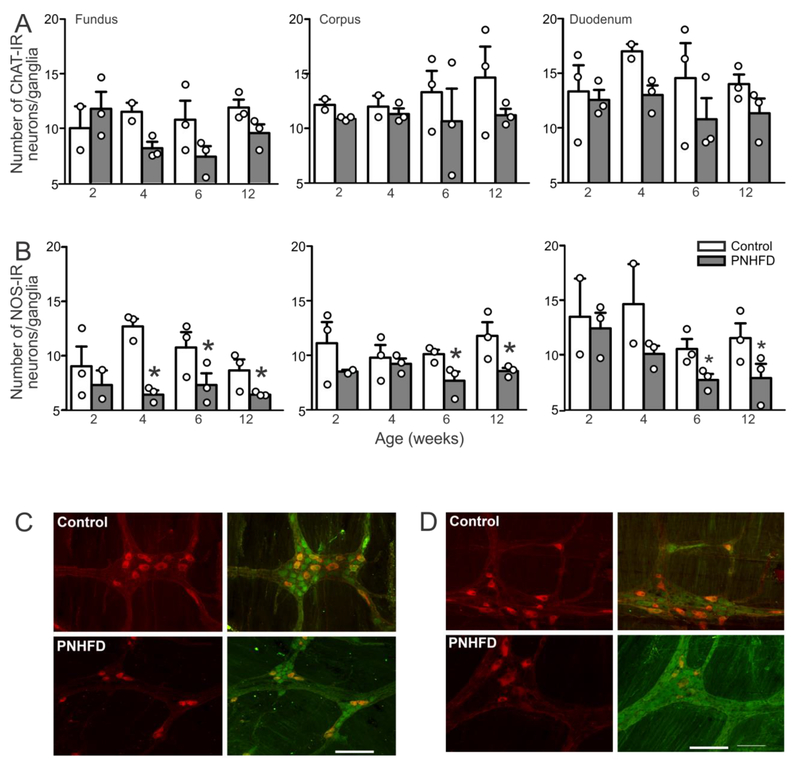Figure 5. PNHFD decreased the number of NOS-IR, but not ChAT-IR neurons in myenteric ganglia.
A Number of cholinergic (ChAT-IR) myenteric neurons in the fundus (left), corpus (middle), and duodenum (right) of control and PNHFD rats. Note that while there was a trend towards a decrease in number of cholinergic neurons, this did not reach significance during the time-period of the current study (N=3 per data point)
B. Number of nitrergic (NOS-IR) myenteric neurons in the fundus (left), corpus (middle), and duodenum (right) of control and PNHFD rats. A significant decrease in number of nitrergic neurons was observed in all regions studied, from 4 weeks of age in the fundus, and by 6 weeks of age in the copurs and duodenum. The loss of NOS-IR neurons remained consistent throughout the duration of the study. (N=3 per data point; *P<0.05; one way ANOVA followed by post hoc Bonferroni comparison between groups)
C. Representative images of ChAT-IR (red; left) and merged ChAT-IR and PGP9.5-IR (green; right) in control (upper) and PNHFD (lower) corpus myenteric ganglia of 12 week old rats. Scale bar = 50μm.
D: Representative images of NOS-IR (red; left) and merged NOS-IR and PGP9.5-IR (green; right) in control (upper) and PNHFD (lower) corpus myenteric ganglia of 12 week old rats. Note the decrease in number of NOS-IR following PNHFD. Scale bar = 50μm.

